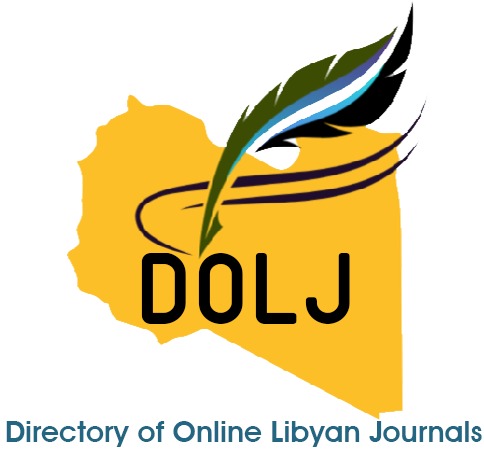Clinico-demographic Aspects of Pulmonary and Extrapulmonary Tuberculosis Among Pediatric Patients Admitted to Benghazi Children Hospital, Benghazi 2023.
DOI:
https://doi.org/10.69667/lmj.2517104%20Keywords:
Pulmonary , Extrapulmonary , Tuberculosis , PediatricAbstract
In Benghazi Children’s Hospital, the infectious department has been a critical topic in the past few years for the frequent admission of tuberculosis cases, which has not been investigated in a descriptive research paper for some time; therefore, our study focused on the clinical features and demographic characteristics of pulmonary and extrapulmonary tuberculosis infection in pediatric patients at our hospital between 2020 and 2023, when accessibility to healthcare facilities was limited because of the C OVID-19 pandemic quarantine. Of the 54 patients included in our case series descriptive study, 38(70.4%) had both pulmonary and extrapulmonary tuberculosis, 13(24.1%) had pulmonary tuberculosis, and 3(5.6%) had extrapulmonary tuberculosis, with the most frequent age interval affected being 0-4 years, the majority were female 33(61.1%), and the most frequent extrapulmonary tuberculosis was abdominal, which was detected in 25(60.97%) of the patients. Of the 45 samples obtained for GeneXpert assessment, 33(73%) were positive, and for the 19 tuberculin skin tests conducted, 12(63.2%) were positive, and only four patients died during the admission as a result of tuberculosis infection morbid consequences, while the rest were discharged to the follow-up infectious clinic.
في مستشفى الأطفال ببنغازي، كان قسم الأمراض المعدية موضوعًا بالغ الأهمية في السنوات القليلة الماضية بسبب القبول المتكرر لحالات السل، وهو ما لم يتم التحقيق فيه في ورقة بحثية وصفية لفترة من الوقت. ركزت دراستنا على السمات السريرية والخصائص الديموغرافية لعدوى السل الرئوي وغير الرئوي لدى مرضى الأطفال في مستشفانا خلال الفترة 2020-2023 عندما كان الوصول إلى مرافق الرعاية الصحية محدودًا بسبب الحجر الصحي بسبب جائحة كوفيد-19. من بين 54 مريضًا مدرجين في دراستنا الوصفية لسلسلة الحالات، كان 38 (70.4٪) مصابين بالسل الرئوي وغير الرئوي، وكان 13 (24.1٪) مصابين بالسل الرئوي، وكان 3 (5.6٪) مصابين بالسل خارج الرئة، وكانت الفترة العمرية الأكثر شيوعًا المتأثرة هي 0-4 سنوات، وكانت الأغلبية من الإناث 33 (61.1٪)، وكان السل خارج الرئة الأكثر شيوعًا هو البطن، والذي تم اكتشافه في 25 (60.97٪) من المرضى؛ من بين 45 عينة تم الحصول عليها لتقييم GeneXpert، كانت 33 (73٪) إيجابية، توفي أربعة مرضى فقط أثناء القبول نتيجة لعواقب مرضية لعدوى السل، مما يسلط الضوء على أهمية التاريخ التفصيلي والفحص السريري وتفسير البيانات المعملية والاختبارات التشخيصية الدقيقة في تشخيص عدوى السل لدى مرضى الأطفال. ويوصي بالتشخيص المبكر والإدارة، بهدف زيادة الوعي وإعلام البحوث المستقبلية بطبيعة المرض
References
World Health Organization. Global tuberculosis report 2023. Geneva: World Health Organization; 2023. Licence: CC BY-NC-SA 3.0 IGO. Available from: https://www.who.int
Centers for Disease Control and Prevention (CDC). TB and Children. November 10, 2022. Available from: https://www.cdc.gov/tb/topic/populations/tbinchildren/default.htm.
World Health Organization (WHO). Country story. Available from: https://www.who.int/about/accountability/results/who-results-report-2020-mtr/country-story/2022/revitalization-of-tb-services-in-libya-following-the-covid-19-pandemic#:~:text=Tuberculosis%20(TB)%20has%20been%20prevalent,100%20000%20people%20%5B1%5D.
WHO Country Office, Libya. Annual Report 2022 - Libya. April 2, 2023. ReliefWeb. Available from: https://reliefweb.int/report/libya/who-country-office-libya-annual-report-2022.
Newton SM, Brent AJ, Anderson S, Whittaker E, Kampmann B. Paediatric tuberculosis. Lancet Infect Dis. 2008 Aug;8(8):498-510.
Centers for Disease Control and Prevention (CDC). Tuberculosis in Children. March 25, 2024. Available from: https://www.cdc.gov/tb/about/children.html#:~:text=Once%20infected%20with%20TB%20germs,sick%20more%20quickly%20than%20adults
Alavi SM, Salmanzadeh S, Bakhtiyariniya P, Albagi A, Hemmatnia F, Alavi L. Prevalence and treatment outcome of pulmonary and extrapulmonary pediatric tuberculosis in southwestern Iran. Caspian J Intern Med. 2015 Fall;6(4):213-9.
Chan-Yeung M, Noertjojo K, Chan SL, Tam CM. Sex differences in tuberculosis in Hong Kong. Int J Tuberc Lung Dis. 2002;6:11–8.
Martinez AN, Rhee JT, Small PM, Behr MA. Sex differences in the epidemiology of tuberculosis in San Francisco. Int J Tuberc Lung Dis. 2000;4:26–31.
Dale K, Tay E, Trauer JM, Trevan P, Denholm J. Gender differences in tuberculosis diagnosis, treatment and outcomes in Victoria, Australia, 2002–2015. Int J Tuberc Lung Dis. 2017;21:1264–71.
Peer V, Schwartz N, Green MS. Corrigendum: Gender differences in tuberculosis incidence rates—A pooled analysis of data from seven high-income countries by age group and time period. Front Public Health. 2023;11:1157235.
World Health Organization (WHO). Gender. Available from: https://www.who.int/teams/global-tuberculosis-programme/populations-comorbidities/gender
Centers for Disease Control and Prevention (CDC). Essential components of a tuberculosis prevention and control program: recommendations of the Advisory Council for the Elimination of Tuberculosis. MMWR. 1995;44(RR–11):2.
Hadida M, Abo-Smhadana A, Draid M. Effects of Anti-Tuberculous Drugs on Liver Function Profile in Libyan Patients with Tuberculosis. Egyptian J Hosp Med. 2013;52:740–751.
Barreto ML, Pereira SM, Ferreira AA. Vacina BCG: eficácia e indicações da vacinação e da revacinação. Jornal De Pediatria. 2006;82(3):s45–s54.
Kaba Ö, Kara M, Odacılar CA, Kamer İ, Sütçü M, Demir SÖ, Çalışkan E, Törün SH, Salman N, Somer A. Evaluation of cases of pediatric extrapulmonary tuberculosis: a single center experience. Turk Pediatri Ars. 2019 Jul 11;54(2):86-92.
Centers for Disease Control and Prevention (CDC). The role of BCG vaccine in the prevention and control of tuberculosis in the United States: a joint statement by the Advisory Council for the Elimination of Tuberculosis and the Advisory Committee on Immunization Practices. MMWR. 1996;45(No. RR-4):
Horsburgh CR Jr. Epidemiology of tuberculosis. UpToDate. 2019. Available from: www.uptodate.com
World Health Organization (WHO). Global tuberculosis report. 2013. Geneva: WHO.
Abubakar I, Laundy MT, French CE, et al. Epidemiology and treatment outcome of childhood tuberculosis in England and Wales: 1999-2006. Arch Dis Child. 2008;93(12):1017–1021.
Santiago-Garcia B, Blazquez-Gamero D, Baquero-Artigao F, et al. Pediatric Extrapulmonary Tuberculosis: Clinical Spectrum, Risk Factors and Diagnostic Challenges in a Low Prevalence Region. Pediatr Infect Dis J. 2016;35(11):1175–1181.
Galli L, Lancella L, Tersigni C, et al. Pediatric Tuberculosis in Italian Children: Epidemiological and Clinical Data from the Italian Register of Pediatric Tuberculosis. Int J Mol Sci. 2016;17(6).
Devrim I, Akturk H, Bayram N, et al. Differences between pediatric extra-pulmonary and pulmonary tuberculosis: a warning sign for the future. Mediterr J Hematol Infect Dis. 2014;6(1):e2014058.
Banta JE, Ani C, Bvute KM, et al. Pulmonary vs. extra-pulmonary tuberculosis hospitalizations in the US [1998–2014]. J Infect Public Health. 2020;13(1):131–139.
Chu P, Chang Y, Zhang X, Han S, Jin Y, Yu Y, Yang Y, Feng G, Wang X, Shen Y, Ni X, Guo Y, Lu J. Epidemiology of extrapulmonary tuberculosis among pediatric inpatients in mainland China: a descriptive, multicenter study. Emerg Microbes Infect. 2022 Dec;11(1):1090-1102.
Sartoris G, Seddon JA, Rabie H, Nel ED, Schaaf HS. Abdominal Tuberculosis in Children: Challenges, Uncertainty, and Confusion. J Pediatr Infect Dis Soc. 2020;9(2):218–227.
Tahseen S, Khanzada FM, Baloch AQ, et al. Extrapulmonary tuberculosis in Pakistan—a nation-wide multicenter retrospective study. PLoS One. 2020;15:e0232134.
Bozdemir ŞE, Nazlıoğlu HÖ, Hacımustafaoğlu M, Çelebi S. Tuberculous Lymphadenitis in Children. J Pediatr Inf. 2012;6:6–11.
Carvalho ACC, Cardoso CAA, Martire TM, Migliori GB, Sant'Anna CC. Epidemiological aspects, clinical manifestations, and prevention of pediatric tuberculosis from the perspective of the End TB Strategy. J Bras Pneumol. 2018 Apr;44(2):134-144.
Mahomed N, Kilborn T, Smit EJ, Chu WCW, Young CYM, Koranteng N, Kasznia-Brown J, Winant AJ, Lee EY, Sodhi KS. Tuberculosis revisited: classic imaging findings in childhood. Pediatr Radiol. 2023 Aug;53(9):1799-1828.
Vohra S, Dhaliwal HS. Miliary Tuberculosis. StatPearls - NCBI Bookshelf. January 30, 2024. Available from: https://www.ncbi.nlm.nih.gov/books/NBK562300/
Sajid A, Riaz S. Role of Gene Expert/MTB Test in Childhood Tuberculosis. September 3, 2018. Available from: https://jumdc.com/index.php/jumdc/article/view/81
Kay AW, Ness T, Verkuijl SE, Viney K, Brands A, Masini T, González Fernández L, Eisenhut M, Detjen AK, Mandalakas AM, Steingart KR, Takwoingi Y. Xpert MTB/RIF Ultra assay for tuberculosis disease and rifampicin resistance in children. Cochrane Database of Systematic Reviews. 2022;9:CD013359.
Centers for Disease Control and Prevention (CDC). Clinical Testing Guidance for Tuberculosis: Tuberculin Skin Test. May 14, 2024. Available from: https://www.cdc.gov/tb/hcp/testing-diagnosis/tuberculin-skin-test.html
Shah AR, Desai KN, Maru AM. Evaluation of hematological parameters in pulmonary tuberculosis patients. J Fam Med Prim Care. 2022;11(8):4424-4428.
World Health Organization (WHO). The treatment of tuberculosis guidelines. Document WHO/HTM/TB/2009.420. 2010. Geneva: WHO.
Sotgiu G, Centis R, D’ambrosio L, Migliori GB. Tuberculosis Treatment and Drug Regimens. Cold Spring Harbor Perspectives in Medicine. 2015;5(5):a017822.











